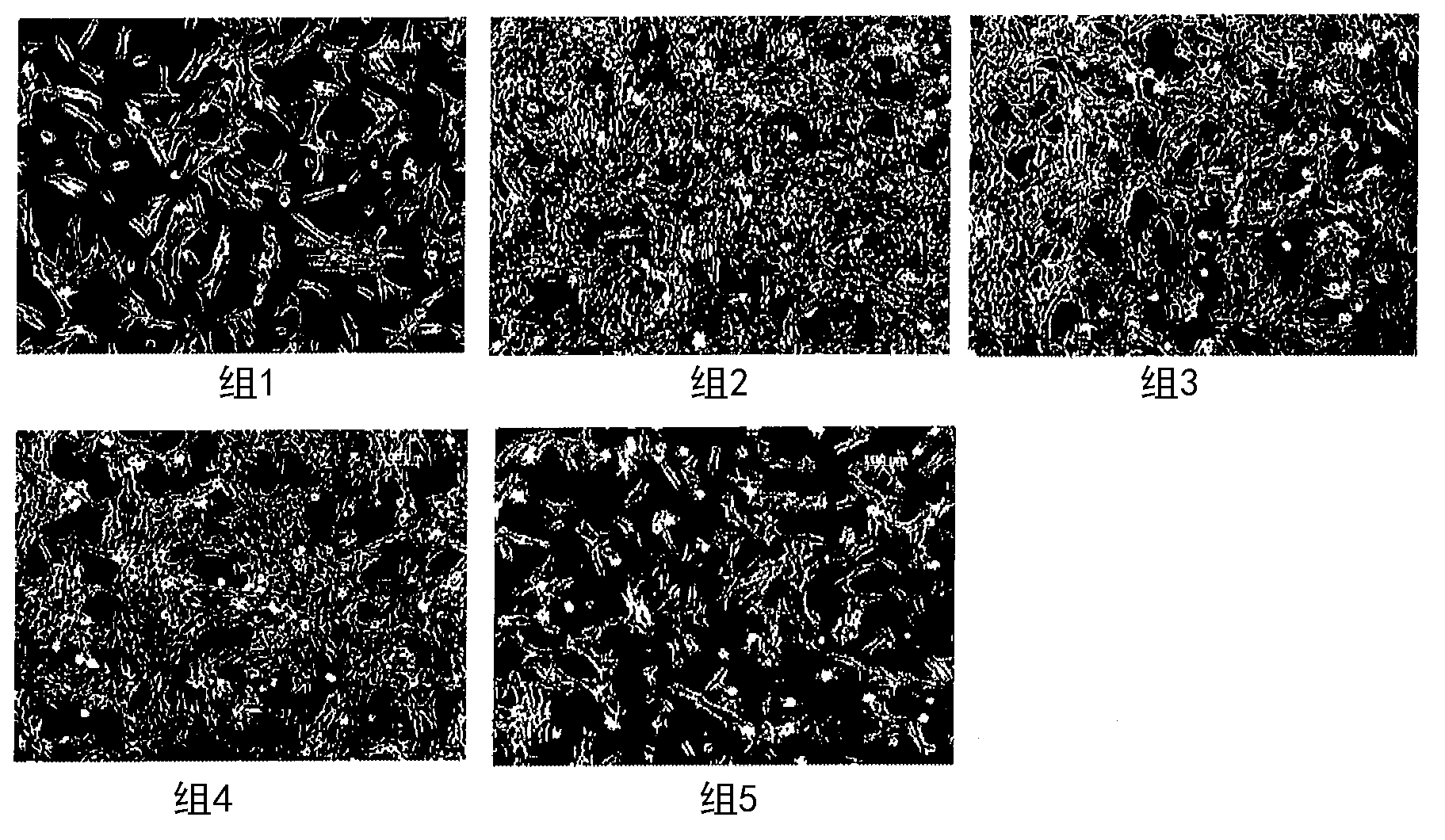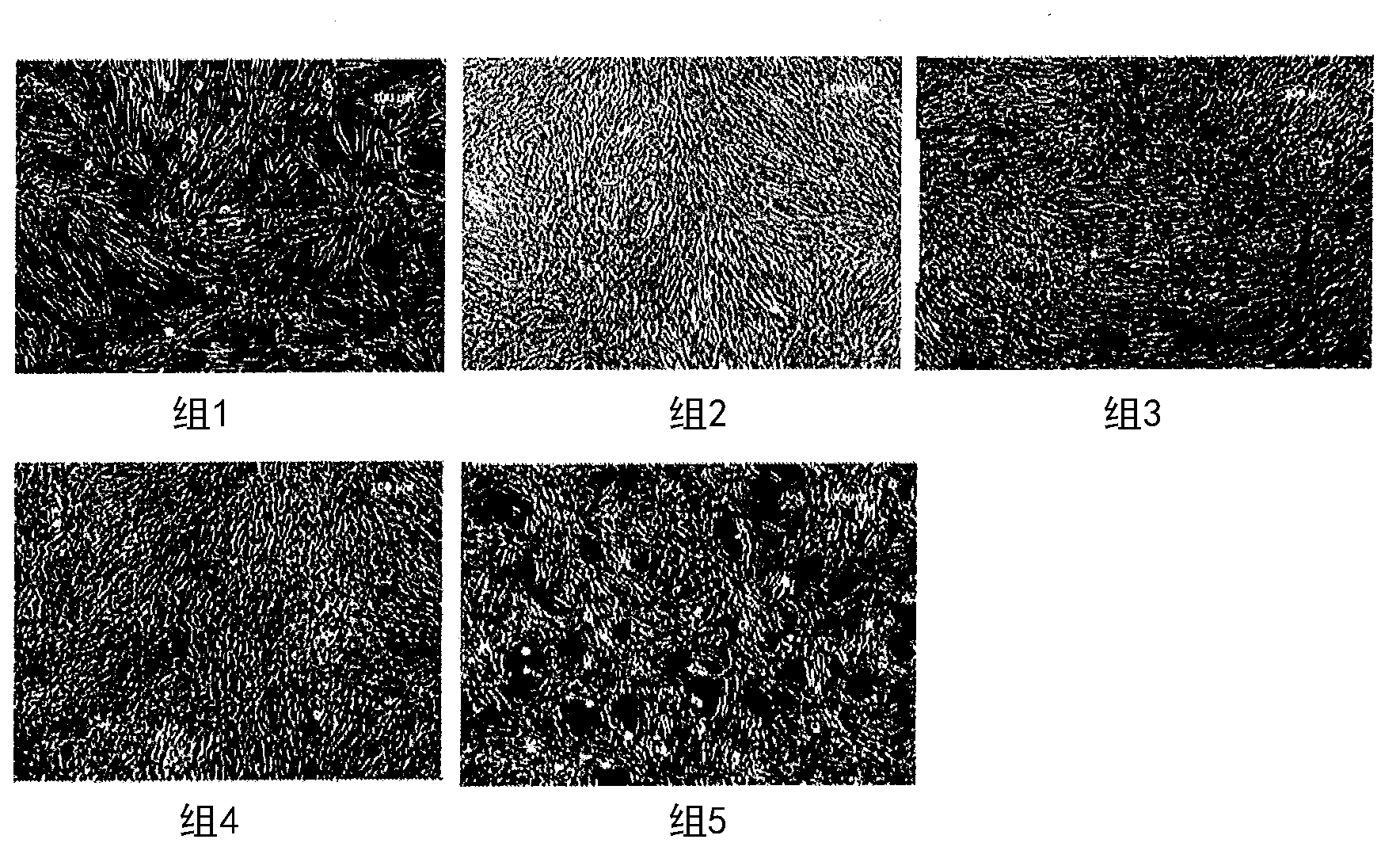Culture medium composition for culturing amnion-derived mesenchymal stem cell, and method for culturing amnion-derived mesenchymal stem cell by using same
A technology of mesenchymal stem cells and culture medium, applied in biochemical equipment and methods, embryonic cells, animal cells, etc., can solve the problem of long proliferation of stem cells
- Summary
- Abstract
- Description
- Claims
- Application Information
AI Technical Summary
Problems solved by technology
Method used
Image
Examples
Embodiment 1
[0039] Example 1: Isolation of mesenchymal stem cells from amnion tissue
[0040]The amnion tissue used in the examples of the present invention was isolated from the placenta, and the isolated tissue was placed in saline containing antibiotics or DMEM (Dulbecco modified Eagle Medium) medium, and then transferred to the laboratory.
[0041] On a clean bench, wash 5 g of amnion tissue with sterile saline, and cut the washed amnion tissue as small as possible with surgical scissors in a petri dish. Add collagenase solution and mix well with the trimmed tissue. Put the mixture into a flask, and then place the flask at 37 °C, 5% CO 2 Incubate for 90 minutes in an incubator to lyse the tissue. Lysed tissue was filtered through a cell strainer in a 50 mL tube and centrifuged. After centrifugation, the supernatant was removed, and the cell pellet was suspended in DMEM-P and inoculated into square flasks, and then incubated at 37 °C, 5% CO 2 cultured in an incubator for 3-4 days...
Embodiment 2
[0042] Example 2: Cultivate isolated amniotic mesenchyme in DMEM-P and KSFM-P mixed medium Stem cells
[0043] The amnion-derived mesenchymal stem cells obtained in Example 1 were mixed with 1.0×10 6 The density of the cells was dispersed in T175 flasks, and cultured in a mixed medium consisting of DMEM-P medium (Table 1) and KSFM-P medium (Table 3) mixed at the ratio shown in Table 4, while each The medium was changed every 2 days. The pictures of the cells on the 3rd and 4th day of culture are as follows figure 1 and 2 shown.
[0044] Table 1: Components of DMEM-P medium
[0045] components
commercial source
concentration
DMEM-HG
WelGENE, Inc.
Sigma-aldrich
0.2mM
Invitrogen
10%
b-FGF
Invitrogen
10ng / ml
NEAA
Invitrogen
10μl / ml
[0046] Table 2: Components of NEAA
[0047] NEAA component
Concentration (m...
Embodiment 3
[0058] Example 3: Immunological characteristics of amnion-derived mesenchymal stem cells cultured in mixed medium Flow cytometric analysis of surface antigen expression
[0059] The amnion-derived mesenchymal stem cells cultured in the mixed medium of Example 2 were characterized by CD series antigen markers. FACS analysis was performed using CD29 (monocyte marker), CD31 (endothelial and stem cell marker), CD34 (hematopoietic stem cell marker), CD44, CD45 (PTPR, ASV, leukocyte marker) and CD73.
[0060] The amnion-derived mesenchymal stem cells obtained in Example 1 were washed with PBS and treated with trypsin, after which the cells were collected and centrifuged at 1500 rpm for 5 minutes. The supernatant was removed, and the cells were incubated in blocking buffer solution (5% serum (normal goat serum + normal horse serum)) for 60 minutes at 4°C, followed by centrifugation at 1500 rpm for 5 minutes. After removing the supernatant, the cells were suspended in PBS and the...
PUM
 Login to View More
Login to View More Abstract
Description
Claims
Application Information
 Login to View More
Login to View More - R&D
- Intellectual Property
- Life Sciences
- Materials
- Tech Scout
- Unparalleled Data Quality
- Higher Quality Content
- 60% Fewer Hallucinations
Browse by: Latest US Patents, China's latest patents, Technical Efficacy Thesaurus, Application Domain, Technology Topic, Popular Technical Reports.
© 2025 PatSnap. All rights reserved.Legal|Privacy policy|Modern Slavery Act Transparency Statement|Sitemap|About US| Contact US: help@patsnap.com



